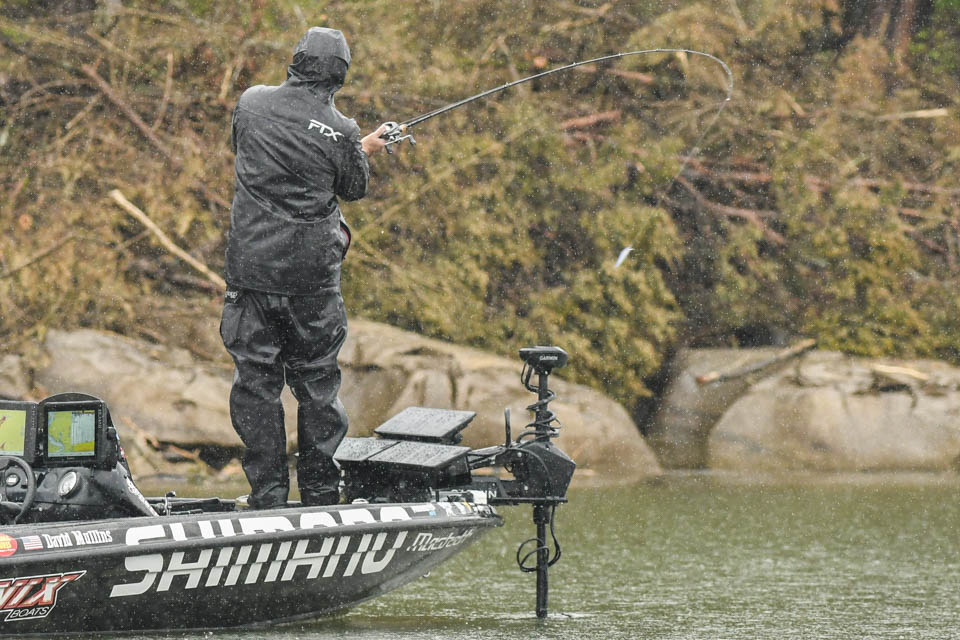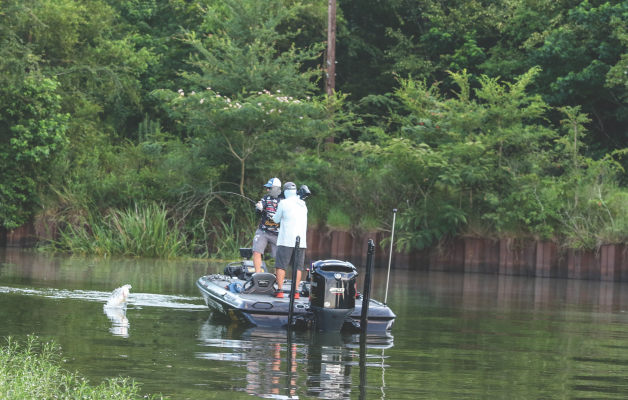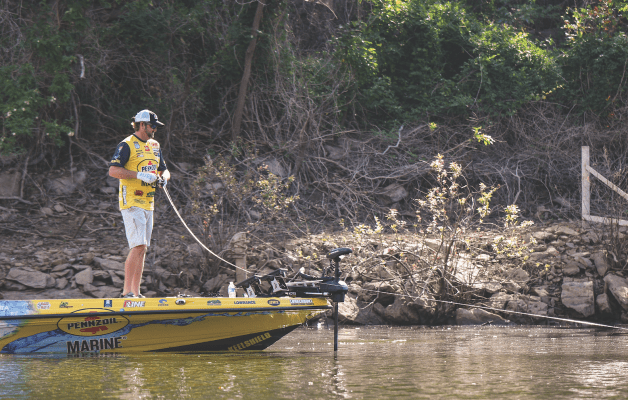
Steady reeling in a crankbait generates enough action on the lure to trigger strikes from aggressive bass. However, Bassmaster Elite Series pros know varying the retrieves of their crankbaits can be the difference between going home empty handed and cashing a check.
The beauty of a crankbait is that it can be retrieved at various speeds and in different ways to appeal to both aggressive and inactive bass. North Carolina pro David Fritts has maximized the full potential of his crankbaits throughout his illustrious career, which includes a Bassmaster Classic title and four other B.A.S.S. victories.
“I don’t vary a lot with the way I retrieve a normal crankbait,” Fritts said. “A lot of it depends on water temperature and water clarity more than anything else. You can bank on that more than anything else. “ Another cranking expert who varies his retrieve depending on conditions and the mood of the fish is Tennessee pro David Mullins. He won the May 2016 Bassmaster Southern Open on Douglas Lake primarily cranking Strike King 10XD and 6XD crankbaits.
“Most of the time I use a fairly fast, steady retrieve,” Mullins said. “It’s not a set-in-stone deal, though. Sometimes when the water is colder [less than 60 degrees] I might slow it up some. But sometimes the bass want it burning by their face.”
Both Fritts and Mullins rely on the gear ratios of their baitcasting reels to set the pace for their cranking. Fritts primarily cranks with a 5.1:1 gear ratio baitcaster that winds in 21 inches of line per turn. “I do wind pretty fast, but I’m not sitting there burning it,” Fritts said. “Although I do wind it pretty fast, I am only moving the bait 21 inches per turn versus a 6.4:1 reel with its 26 or 27 inches per turn. That 5-inch difference is a lot of difference in speed.”
Fritts believes the downfall of highspeed reels is that the lure moves too fast when cranking with a 7.5:1 reel winding in 36 inches of line per turn.
“You will get some bites, but you are not going to catch a lot of the fish that way,” he said. The running depth of his crankbaits determines what gear ratio reel Mullins employs for cranking. He opts for a 5.1:1 reel for deep cranking, mainly for the reel’s torque rather than its inches-per-turn capability. Mullins switches to higher gear ratio reels for
cranking shallow-diving crankbaits at a faster pace. Cold water prompts Fritts to slow down his crankbait pace and occasionally sweep the lure to entice lethargic bass. “If the water is real cold, in the high 40s or the 50-degree
range, I will throw a Berkley Bad Shad and wind it down and sweep it,” he said. “I just pull it with the rod and then wind in the slack.”
Fritts believes the pull-and-pause presentation is the “deadliest retrieve there is in cold water” for thin-body crankbaits such as the Bad Shad. “When you are winding your slack up, it is almost stopping the bait, but it still has a little bit of momentum coming to you,” he said.





